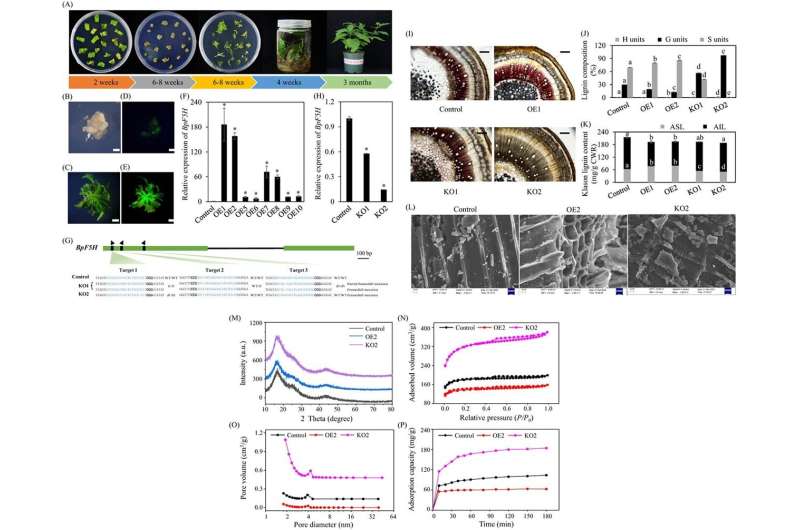Unlocking carbon's potential: CRISPR boosts lignocellulose absorption

Lignocellulosic biomass, such as paper mulberry, holds promise for sustainable material production due to its cost-effectiveness and renewability. However, optimizing lignin composition remains challenging due to its complex structure and varied composition, impacting the efficiency and quality of resulting porous carbon materials.
Addressing these challenges requires further exploration into genetic modifications that can refine lignin composition, unlocking the full potential of lignocellulosic biomass for high-value industrial applications.
A by researchers from the University of Jinan and the Chinese Academy of Sciences, published in Horticulture Research, investigates the effects of CRISPR/Cas9-mediated mutations in the F5H gene on the adsorption capacity of lignocellulose-based porous carbon derived from paper mulberry.
This study focused on genetically modifying the F5H gene in paper mulberry to enhance its lignin composition and improve the adsorption capacity of the resulting porous carbon. Researchers created overexpression (OE) and knockout (KO) lines, resulting in transgenic plants with varied lignin structures.
The KO lines exhibited increased micropores and significantly improved adsorption capacity compared to control and OE lines. Specifically, the KO2 line demonstrated a 3.3-fold increase in guaiacyl (G) units and the highest surface area among all samples, leading to superior adsorption performance for methyl orange.
These results highlight the potential of CRISPR/Cas9 technology to optimize lignin composition, paving the way for advanced material applications and enhancing the utility of lignocellulosic biomass.
Dr. Chunxiang Fu, one of the lead researchers, emphasized, "Our findings underscore the vast potential of genetic engineering in refining lignin composition for advanced material applications. By harnessing CRISPR/Cas9 technology, we can tailor lignocellulosic biomass properties, opening new avenues for sustainable and high-performance materials."
The study's outcomes demonstrate the feasibility of using CRISPR/Cas9-mediated genetic modifications to enhance lignocellulosic biomass-derived materials. This approach not only improves the adsorption capacity of porous carbon but also lays the groundwork for developing high-value bioproducts from other woody plants, potentially revolutionizing bioengineering and material science fields.
More information: Yue Xu et al, CRISPR/Cas9-mediated mutation of FERULATE 5-HYDROXYLASE enhances adsorption capacity of lignocellulose-based porous carbon from paper mulberry, Horticulture Research (2024).
Journal information: Horticulture Research
Provided by TranSpread




















